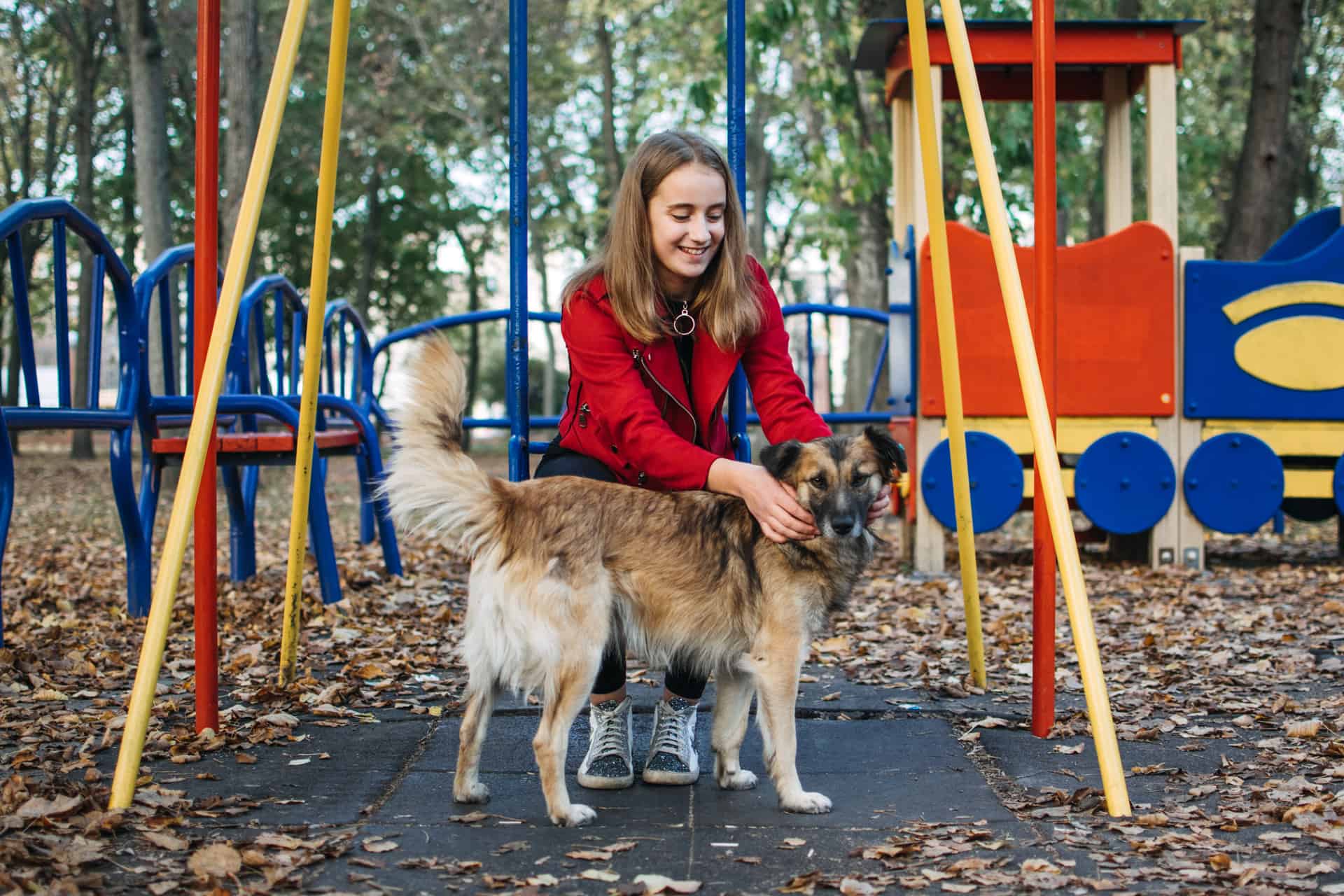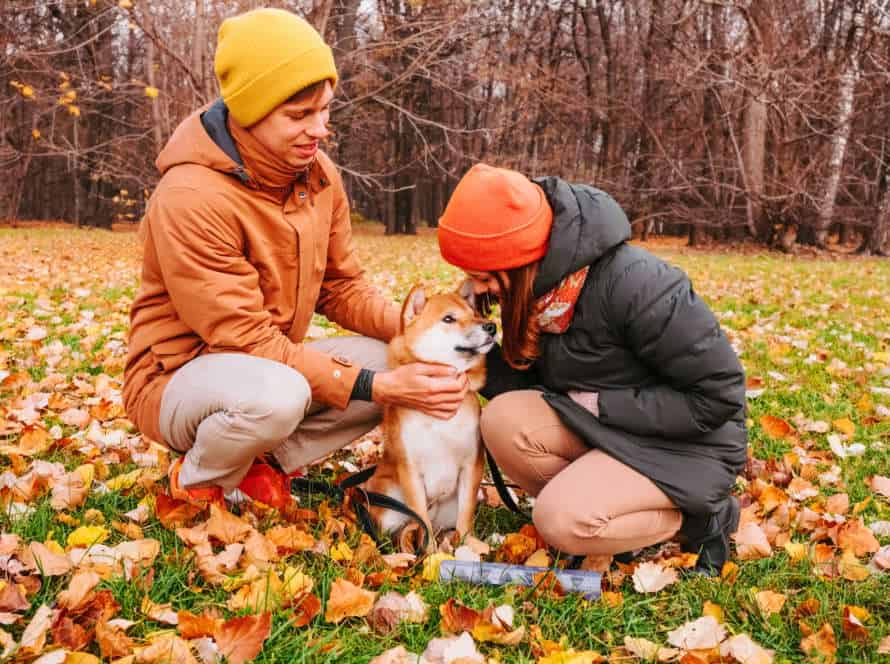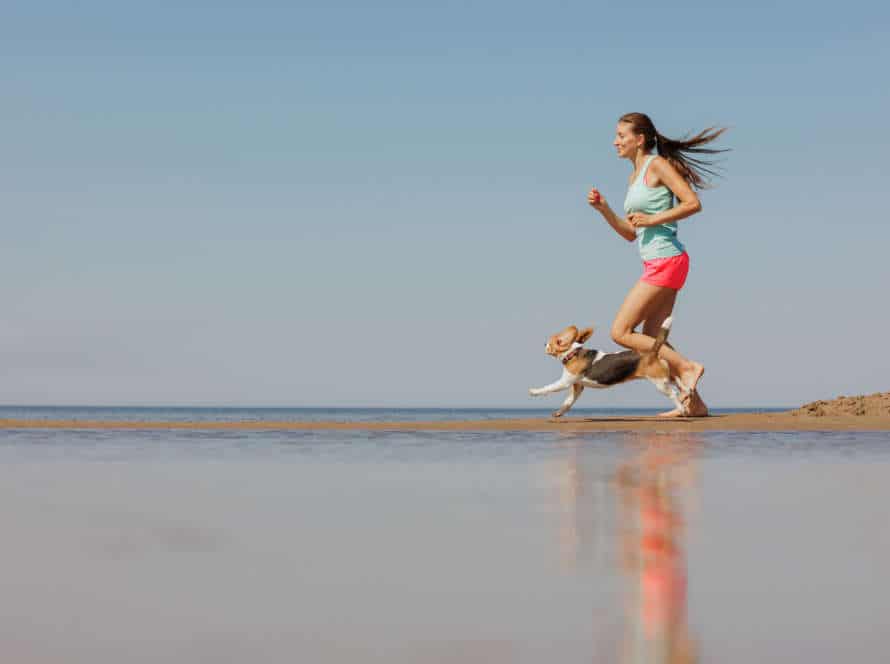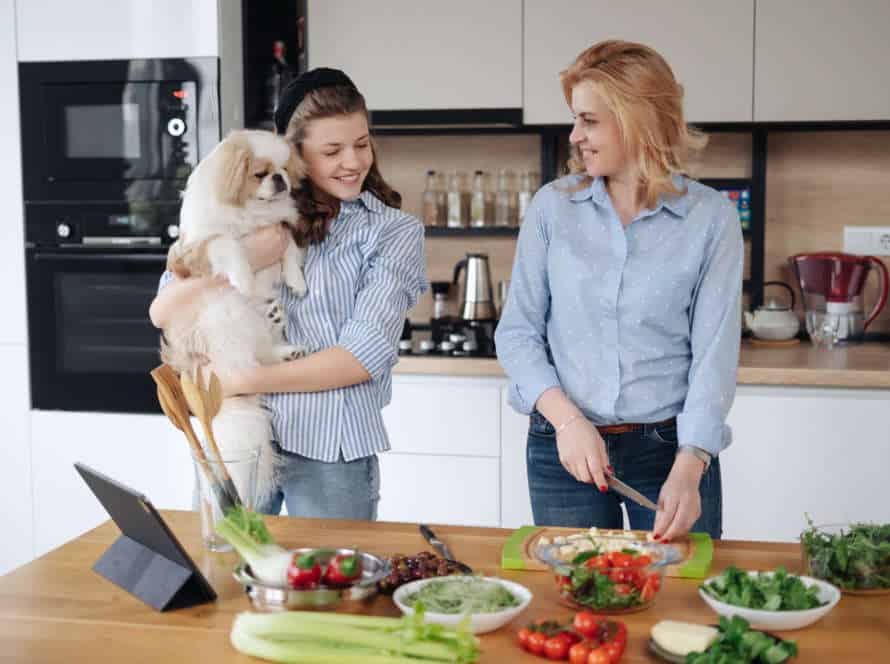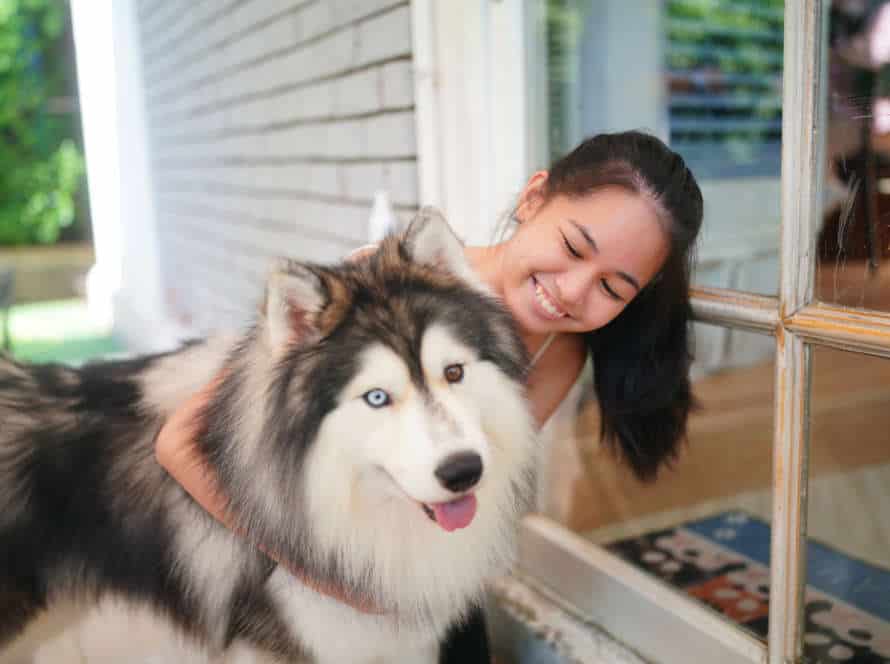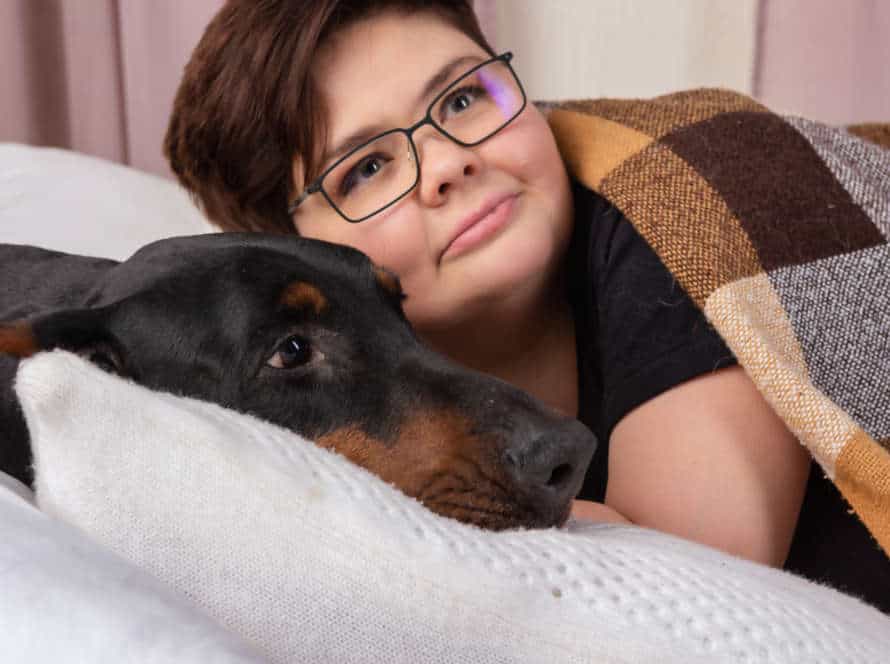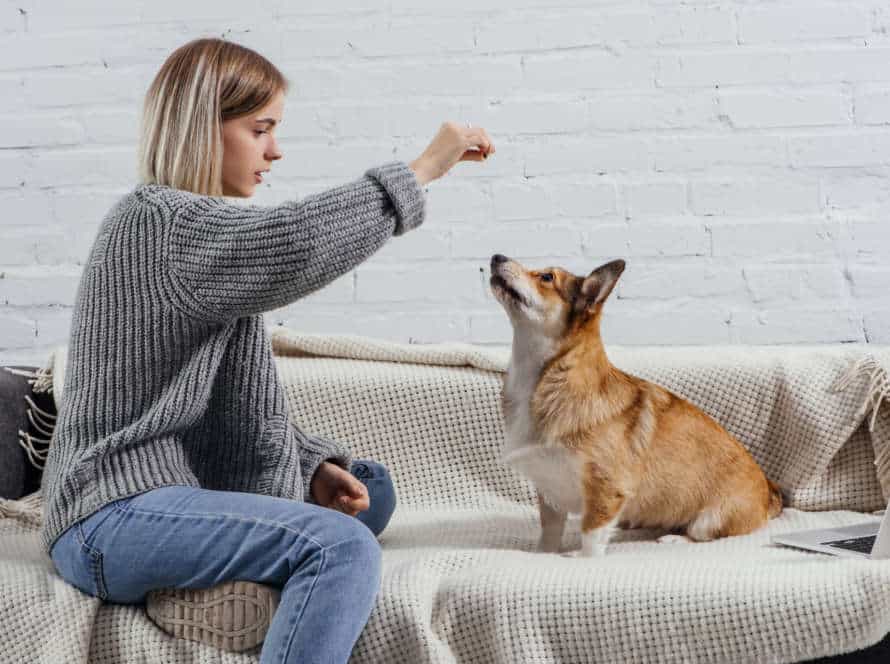Understanding Your Rescued Dog
Adopting a rescue pup is awesome! But, it can be scary too. Building trust with a rescued doggo must be done calmly and patiently. It’s essential to grasp the process of your pup going from fearful to trusting. Let’s dive in to learn more!
Overcoming fear
Beating fear is a key part of making a strong connection with your saved pup. To help them go from being scared to trusting, it’s important to know their history, what worries them, and how their body moves.
Here are some tips to remember:
- Give your pup a steady, safe environment with a daily plan and few changes in their living space.
- Use positive training methods to give them rewards for good behavior and don’t punish them or be physically intimidating.
- Respect their limits and give them room to be at ease while introducing them slowly to new people, spots, and activities.
- Learn to identify their body language and be aware of signs of tension, fear, and anxiety to stop triggers and give them support when they need it.
With patience, dedication, and love you can help your saved pup beat their fears and build a strong bond based on trust and friendship.
Pro tip: Talk to a professional dog trainer or behavior specialist if you’re having a hard time dealing with your pup’s fears or need special advice.
Building trust
Constructing trust between you and your rescued pup is key in forming a loving relationship. They may have experienced fear and anxiety from the past, so patience and steadiness are vital. Here’s what you can do:
- Give your pup room to become accustomed to the fresh environment.
- Set up daily routines and stay faithful to them.
- Utilize positive reinforcement techniques with rewards such as adoration and snacks.
- Abstain from physical punishment as this could set off fear in your pup.
- Devote quality time playing and connecting with your pup regularly.
- Be aware of your body language and tone of voice when interacting with your pup.
Every dog is unique, and the trust-building process might take longer for some dogs than others. Remain patient and consistent, and soon enough, your rescued pup will learn to trust and love you.
Creating a safe space for your dog
To give your newly-rescued pup a safe space, you must understand their behavior, fears, and triggers. Provide them a secure environment and help them go from scared to trusting.
Here are some tips:
- Offer a peaceful and quiet spot for your dog to go when feeling overwhelmed.
- Don’t startle them with loud noises or sudden movements.
- Develop a dependable routine to reduce anxiety.
- Utilize positive reinforcement training to build trust.
- Be understanding and let them take things at their own pace.
Creating a safe space takes time, commitment, and lots of love and patience.
Pro tip: If they have severe behavior issues or trauma, seek the help of a professional dog trainer or behaviorist.
Training Techniques for a Rescued Dog
Rescued dogs can be tricky to train, but the rewards are so worth it. Teaching your pup to trust is key! You’ll be teaching them how to behave, follow commands, and form a connection with you.
Here are some tips to help on the journey:
- Train them with patience and consistency.
- Use positive reinforcement for good behavior.
- Let them learn at their own pace.
- Offer plenty of treats, love, and praise.
- Show them that you care and that you’re always there.
Positive reinforcement training
Positive reinforcement training is great for rescued dogs! Encourage desirable behaviour with rewards and praise, not punishment or corrections. Here are some tips:
- Use treats, toys or verbal praise to reward good behaviour like sitting, staying or coming when called.
- Be consistent with commands and rewards, so your pup knows that good behaviour will always be rewarded.
- Never use physical punishment or aggressive behaviour. It can ruin the trust between you and your pet.
- Adjust training techniques to your dog’s personality and needs, and be patient and understanding.
Pro tip: Positive reinforcement training not only promotes good behaviour but also helps build a strong bond between you and your pup!
Avoiding punishment-based training
Punishment-based training techniques for rescued dogs can cause long-term harm. This includes emotional damage, as well as difficulty forming a bond with your pet.
Rather than punishing, use positive reinforcement to reward good behavior. Here are some tips to get you started:
- Utilize treats, praises, and cuddles for good behavior.
- Stay consistent with your training methods, no punishments.
- Shouting, hitting, or other physical punishment should be avoided. It can cause fear and anxiety.
- Be patient and don’t give up. Your rescued dog needs time to adjust.
With patience and love, your rescued dog will trust you and create a strong bond.
Seeking help from a professional dog trainer
When it comes to rescuing a pup, enlisting a pro dog trainer is key. They can custom-make a plan to fit your pup’s needs and personality. They can teach commands and socialization techniques that build trust. Plus, they’ll identify any issues causing fear and anxiety and guide you through the journey.
Remember, rescuing can be tough, but the love and bond formed make it worth it. Pro tip: Be patient, consistent, and use positive reinforcement training.
Building a Strong Relationship with Your Rescued Dog
Rescued dogs come with their own individual needs. From fear to lack of trust, it’ll take time and effort to build a strong bond. Here’s how to get started: Be patient, be consistent. These are key for creating a strong connection with your rescued pup.
Taking time to bond
Creating a long-lasting connection with your rescued pup requires patience and effort. But, it is a journey from fright to trust that is worth the effort. Here are some tips for bonding with your pup:
- Respect their space – Let them come to you on their own terms.
- Establish a routine – To help them feel secure, make sure you have a routine.
- Positive reinforcement – Treats, praise, and affection for good behavior.
- Training – Positive and consistent training increases trust between you and your pup.
- Exercise together – Walking or playing together helps create a strong bond and a healthy lifestyle.
Be patient, be persistent – You’ll be rewarded with the pup’s love and loyalty.
Understanding your dog’s body language
Interpreting your dog’s body language is essential to forming a strong relationship with your rescued pup. To do this, it’s important to be aware of what their movements mean. Here are some key signals to look out for:
- Tail: A loosely wagging tail means they’re content. A tucked tail may indicate unease or fright.
- Eye contact: Direct eye contact indicates confidence and trust. Prolonged staring or avoiding eye contact can show aggression, fear, or submission.
- Ear position: Ears that face forward mean they’re attentive and interested. Flattened or backward-facing ears could be fearful or aggressive.
- Posture: A relaxed, open posture with a loose body is a sign of a calm and friendly dog. Stiffness or tenseness could signal stress or aggression.
By understanding these signs and reacting accordingly, you can create a loving, trusting bond with your rescued dog.
Communicating effectively with your dog
Communicating with your dog is very important for a fantastic, strong bond. Especially for a rescued pup with trust issues. Here are some helpful tips:
- Body Language: Dogs mostly talk with body language. Pay attention to your pet’s ears, tail, and posture.
- Tone of Voice: Pups are sensitive to the tone of your voice. Be firm and assertive when giving commands. Use a soft and affectionate tone to show love.
- Rewards: Positive reinforcement helps in communication. Treats and praise work effectively. Use rewards to encourage good behavior and discourage bad behavior.
- Consistency: Consistency is essential. Use the same words, body language, and voice tone consistently. This avoids any confusion.
- Patience: Building a strong connection with a rescued pup takes time and patience. Be constant and patient in communication to make your pet feel secure.
Remember communication is two-way. Notice your pup’s cues and adjust your communication style accordingly.
Coping with Unique Challenges of Rescued Dogs
Adopting a rescue pup? You know the rewards, but also the challenges. These animals often have a past of troubles. It takes patience, understanding, and trust-building to form a bond. Today, let’s discuss strategies to cope. Get ready to learn the tricks!
Separation anxiety
Separation anxiety is a challenge many rescued dogs face. Reasons include trauma and instability in their past. To overcome this, patience and understanding are key. Consistent training helps too. Here are some tips:
- Start slowly – leave the dog for short times before increasing the time away.
- Create a safe, comfortable space for the dog when you’re not home.
- Use positive reinforcement techniques such as treats and praise to reward good behavior.
- Crate training can give the dog a sense of security.
- Severe cases may need professional help and/or medication.
Every dog is unique, so it may take time for your rescued dog to feel at home. With patience, love, and consistency, you can help them overcome fears and build a trusting relationship.
Fear-based aggression
Fear-based aggression is common in rescued dogs. It’s caused by the trauma they have faced. Patience, understanding, and proper training can help. Here are tips to move from fear to trust:
- Identify triggers causing aggression. Desensitize them.
- Establish a routine. Make them feel safe.
- Use positive reinforcement, like treats and praise.
- Get professional help, if needed.
Trust-building with a rescued dog takes effort, but it’s worth it.
Coping with triggers and trauma
For many rescued pups, managing triggers and trauma can be a tough, long-term process. But with patience, consistency, and specialist support, you can help your dog move from fear to trust. Here are some ideas for aiding your rescued dog:
- Create a regular plan with socializing, teaching, eating, exercising, and sleeping, and stick to it.
- Employ positive reinforcement such as treats, praise, and fun activities, to create trust and self-belief.
- Avoid punishments that might lead to more fear, stress, and aggression in your pet.
- Supply lots of physical and mental stimulation such as problem toys, interactive play, and outdoor trips.
- Find professional help from a qualified canine behaviorist or trainer to deal with your pup’s triggers and trauma with customized strategies and techniques.
Pro tip: Be patient and understanding with your rescued pup’s issues as it takes time and effort to construct trust and confidence. Notice small victories and progress, and don’t give up on your dog!
Taking Care of Your Rescued Dog’s Physical and Mental Health
You’re a new pup-parent! You want to make sure your rescued doggo is taken care of. This means physical and mental health. The physical side is nutrition and exercise. The emotional side is about trust and respect.
Here, let’s look at how to help your pup adjust to their new home. And why it’s important too.
Regular vet check-ups
It’s a must to take your adopted dog to regular vet check-ups. This is due to the trauma and neglect they may have gone through. Here are some reasons why:
- Early detection and treatment of any health issues. This includes dental and parasitic infections, plus allergies.
- Assessing physical health. This could be any joint problems or mobility issues.
- Behavioral health. This includes aggression, anxiety, or depression.
To keep your pup in tip-top shape, make sure they have regular vet check-ups.
Pro-Tip: Keep a log of your dog’s medical history and share it with the vet.
Appropriate exercise and nutrition
Exercise and nutrition are key for taking care of your rescued pup’s physical and mental wellbeing. Start slow with low-intensity activities such as short walks and increase the intensity as your dog feels more comfortable. Regular exercise helps keep weight down and soothes emotions. It’s vital to feed them quality protein, vegetables, and whole grains for an ideal weight and good health. Ask your vet for the best diet for your pup, especially if they have allergies. Also make sure to give them always fresh water and no human food. With proper exercise and nutrition, you can create the basis for a journey from fear to trust.
Pro tip: Positive reinforcement training is a great way to promote exercise and healthy eating in a rescued pup.
Fostering mental stimulation and engagement
For your adopted pup’s physical and mental health, it’s vital to foster mental stimulation and engagement. Here are some ideas:
- Puzzle toys. Fill them with treats to keep your pup interested.
- Training. Educate your pup with positive reinforcement techniques to build trust.
- Playtime. Stimulate their brain with hide-and-seek or fetch.
- Nose work. Engage in activities that use their superior sense of smell.
Pro Tip: Enhancing mental activity can help improve your pup’s behavior and wellbeing. Encourage mental stimulation to help your rescued dog move past fear and build trust.
Frequently Asked Questions
What is ‘From Fear to Trust: A Journey with Your Rescued Dog’?
‘From Fear to Trust: A Journey with Your Rescued Dog’ is a book that explains how to build trust and a good relationship with a rescued dog. It covers the process a dog goes through as it transitions from a fearful state to one where it feels safe and loved.
What makes a rescued dog different from other dogs?
Rescued dogs often have a history of neglect or abuse before being rescued. This makes them more anxious and fearful of humans and other animals. They may have trust issues that need to be addressed and require specialized care and attention to adapt to a new environment.
How can I help my rescued dog adjust to its new home?
A rescued dog needs time to adjust to its new surroundings, so it is important to be patient and gentle with it. You can help your dog adjust by establishing a routine, providing lots of positive reinforcement, and creating a calm and safe environment.
What should I do if my rescued dog shows signs of fear or anxiety?
If your rescued dog shows signs of fear or anxiety, it is important to remain calm and be patient. You can help your dog by providing a secure and comfortable space, eliminating any triggers that may be causing the fear, and seeking professional help from a veterinarian or dog behaviorist if needed.
Can a rescued dog ever fully recover from its past traumas?
While it may not be possible for a rescued dog to completely forget its past traumas, it is possible for it to recover and live a happy and healthy life in a new home. With proper care, love, and patience, a rescued dog can learn to trust humans and become a lovable and loyal companion.
Is it better to adopt a rescued dog or a puppy?
Both rescued dogs and puppies can make great pets, but adopting a rescued dog can be more fulfilling as you are giving them a second chance at life. Additionally, rescued dogs tend to be more grateful and affectionate towards their new owners, as they have experienced the trauma of neglect or abuse.

